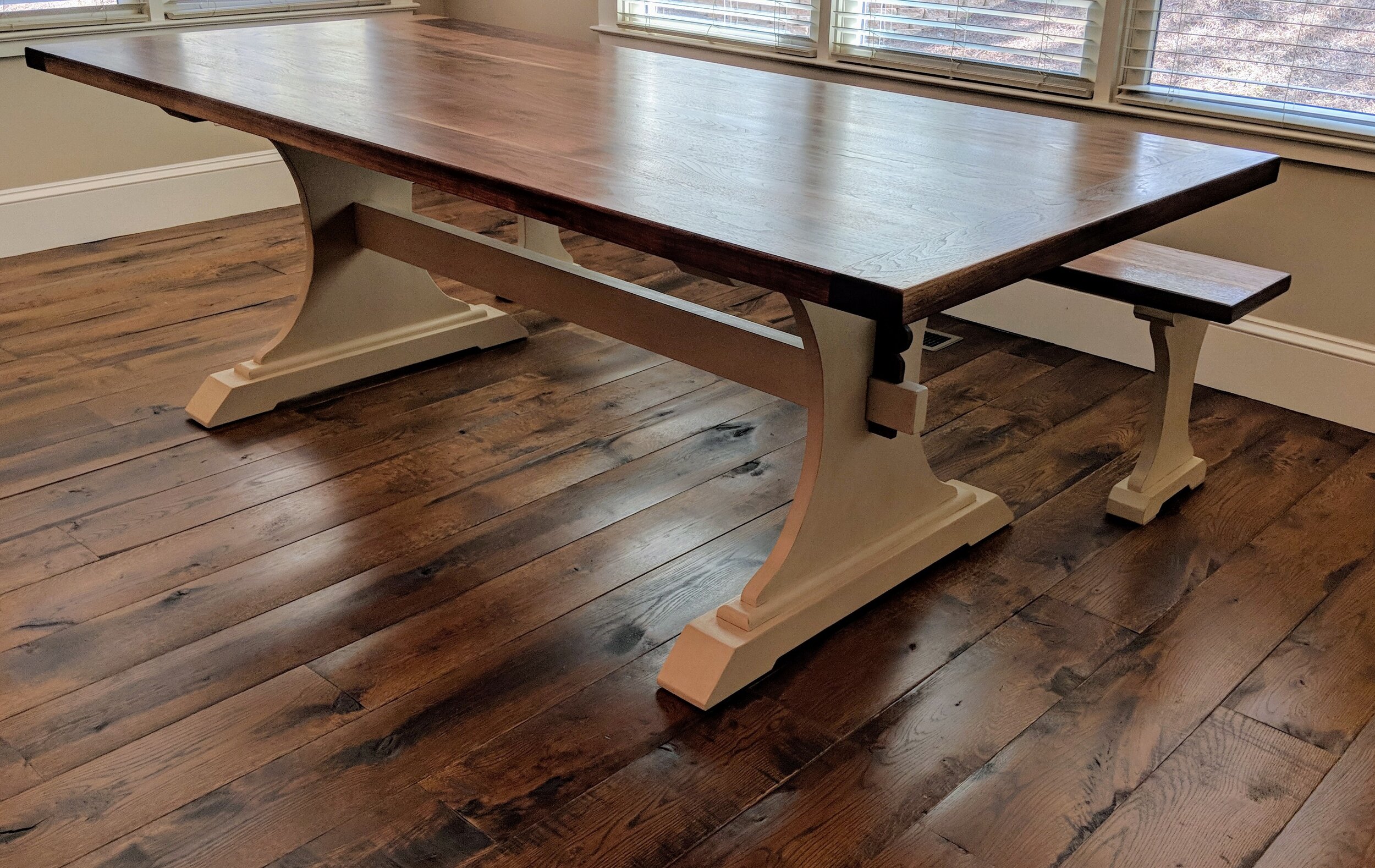Find the Ideal Dining Room Table Legs for Any Interior Design Style
Find the Ideal Dining Room Table Legs for Any Interior Design Style
Blog Article
From Standard to Modern: Discover the Ideal Eating Space Table Legs for Your Design
While traditional styles such as cabriole and transformed legs evoke a sense of ageless refinement, contemporary styles like hairpin and geometric choices offer an opportunity for striking visual rate of interest. As you take into consideration these elements, the question stays: exactly how can you flawlessly incorporate these varied leg styles to create a harmonious dining experience?
Understanding Table Leg Styles
The range of eating room table leg designs can considerably affect both the visual appeals and performance of the area. Each leg style contributes unique sensible attributes and aesthetic aspects, dealing with varied design choices and use demands. Comprehending these styles is important for selecting the right dining table that straightens with your total interior decoration vision.
For instance, conical legs use a clean, classic appearance that can improve a room's elegance, while stand bases offer stability and optimize legroom, making them suitable for smaller spaces. Barrette legs, a trademark of mid-century modern layout, introduce a commercial style, permitting a ventilated, open feeling. Trestle legs evoke rustic beauty, supplying robust assistance and a sense of eternity.
Wood legs can bring warmth and structure, whereas steel options commonly convey a smooth, modern ambiance. Ultimately, comprehending table leg designs is crucial for creating a cohesive dining location that mirrors individual style while guaranteeing functionality and convenience.
Traditional Table Leg Options
When choosing dining-room table legs, typical options typically symbolize classic style and craftsmanship. These designs reflect a rich heritage and a commitment to high quality, making them suitable for those that value timeless visual appeals.
One of the most renowned conventional leg styles is the cabriole leg, defined by its stylish rounded shape. This design typically features ornamental carvings and is most typically found in Queen Anne and Chippendale furniture. Another popular option is the transformed leg, which flaunts a collection of smooth, rounded forms that supply a traditional look while keeping stability.
In addition, the straight leg, while simple, offers a sturdy and basic structure that can blend flawlessly with a variety of tabletop styles. For those drawn to ornate describing, claw-and-ball feet legs stimulate a sense of splendour and can work as a stunning focal factor in any kind of eating space.
Lastly, stand bases, although not strictly legs, provide an alternative typical choice that enables ample legroom and can be perfectly sculpted. Each of these conventional leg designs adds to the overall setting of a dining room, weding function with visual charm.

Modern Table Leg Styles
Modern table leg designs use a diverse series of styles that stress clean lines and cutting-edge materials. These designs often prioritize capability while working as striking prime focus within a dining area. Minimalist looks are prevalent, with legs crafted from click resources products such as steel, glass, and engineered timber, which contribute to a contemporary and ventilated feeling.
One popular style is the barrette leg, characterized by its slim, conical structure that supplies security without frustrating the tabletop (dining room table legs). This style is usually found in mid-century contemporary furniture and can easily enhance my blog various table shapes. One more fad is the usage of geometric shapes, where legs may handle asymmetrical or angular forms, adding aesthetic passion and a touch of artistry

Blending Designs for One-of-a-kind Rooms
Commonly, house owners seek to create unique eating areas that show their personal design by mixing different design components. This strategy enables for the consolidation of diverse aesthetics, causing an unified yet distinctive setting. Matching a rustic wood table with smooth, modern steel legs can create an eye-catching comparison that elevates the area's general appeal.
In addition, integrating vintage table legs with modern tabletops can stimulate a sense of background while preserving a modern-day perceptiveness. Such mixes not only display private preference but additionally encourage creative thinking, enabling home owners to curate an area that really feels both personal and inviting.
Color plays a critical function in this mixing process; choosing table legs that enhance or contrast with the existing color design can improve aesthetic interest. Whitewashed legs can soften the boldness of a dark table surface area, developing a balanced aesthetic.
Tips for Picking the Right Legs
Selecting the right table legs is vital for attaining both functionality and aesthetic charm in your eating space. Begin by thinking about the general design of your area. Conventional settings gain from legs that include detailed carvings or turned layouts, while modern areas may call for streamlined, minimal styles.
Following, examine the height and stability of the legs. dining room table legs. Standard table range between 28 to 30 inches in elevation, so guarantee the legs complement this measurement for comfort. In addition, robust materials, such as hardwood or metal, can improve security and durability
Examine the leg form too-- alternatives consist of right, tapered, or stand layouts. Straight legs supply a classic look, while conical legs can include a touch of style. Pedestal bases provide ample legroom and are perfect for smaller spaces.
Conclusion
In recap, selecting the ideal eating check space table legs requires mindful consideration of both traditional and modern-day styles. By harmonizing leg design, height, and product with the overall decor, a natural and inviting ambience can be attained.
The variety of eating area table leg styles can substantially influence both the looks and functionality of the room. Eventually, recognizing table leg styles is essential for developing a cohesive eating area that shows individual style while making certain practicality and comfort.One of the most famous traditional leg styles is the cabriole leg, identified by its graceful rounded form. Straight legs provide a timeless appearance, while tapered legs can include a touch of style.In summary, choosing the excellent dining space table legs calls for careful consideration of both typical and modern designs.
Report this page